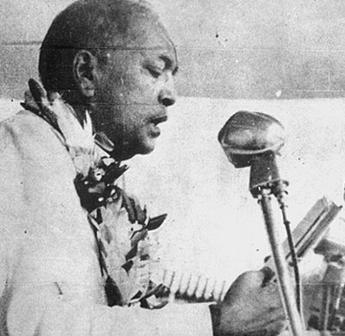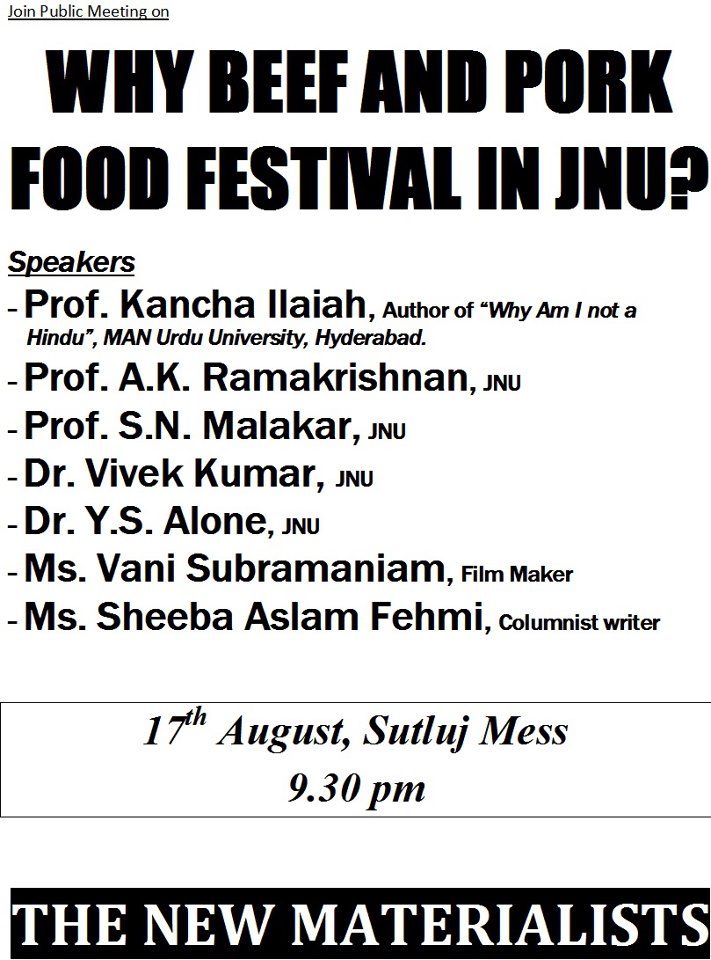Abdul Najeeb Noorul Ameen
The American philosopher Abi Doukhan makes an interesting observation in her book on the philosophy of Emmanuel Levinas. She states that the word ethics is derived from the Greek word ethos. The ethos pertains to the customs and principles of a society. The concept of the ethical refers to those actions that fit into the ethos of society. The primordial meaning of ethics is that which bounds the community together, and the meaning of unethical is that which weakens and destroys the bond. Can ethics be truly independent of ethos? Can ethos/ethics recognize the alien?—a key question Ambedkar tackled on his road to conversion.
On October 13, 1935, on the occasion of a Depressed Classes conference held at Yeola, Babasaheb Ambedkar shocked everyone with his announcement. He declared that he would convert from Hinduism. “I was born in Hinduism,” he said, “but I will not die as a Hindu.” In 1936, Ambedkar organized a conference called Mumbai Ilakha Mahar Parishad (Mumbai Province Mahar Conference). Ambedkar reiterated his decision to convert from Hinduism and explained to his followers why he did want to do so. The address was later published as Mukti Kon Pathe (What Path to Salvation?). Ambedkar said that the Dalit Movement needed ‘strength’ (economic capacity and social support) to carry on its struggle. Ambedkar told his audience that there are three aspects to social strength: wealth, mental strength, and manpower. The centuries-old oppression had deprived Dalits of both education and wealth. All that they were left with was manpower. Dalits, the third largest community in India after upper castes and Muslims, could not make use of their numbers. Unlike Muslims, they were fragmented and scattered across the subcontinent. Neither were Dalits a united political constituency. Since they did not possess the individual capacity for continuous struggle, they should look for it elsewhere and acquire it from the outside. Therefore, convert.
The ideal religion to convert ought to be self-respecting, self-supporting, and politically organized. They would treat Dalits as full and equal members of their religion and not as untouchables. They would stand beside Dalits in their struggle for equal rights. In this vein, Ambedkar discussed the merits of two religions, Islam and Sikhism. The main aspect of Islam and Sikhism that deeply impressed Ambedkar was their sense of fraternity. In both religions, communal solidarity is an in-built feature. Both urge their members to build an egalitarian community, treat each other as brothers and equals, forego differences, and unite to become a ‘single people’. Thus, these religions had a vibrant internal culture of associated life where they held in common, meals, morals, values, and ends. In India, these religions too had traces of an internal caste-like system. But unlike Hinduism, it was not part of their theology. The reform-minded Muslims and Sikhs could reform Islam and Sikhism off of castes by abiding by their core values, and their theology would not oppose.
Although Muslims and Sikhs would defend their kinsmen, they would not come to the rescue of untouchables. Why? They knew about the injustice done to Dalits. It was because, as Ambedkar said, the ethics of ethos did not extend beyond the circle of kinship of religion. The condition of Dalits would evoke pity in the hearts of Muslims and Sikhs, but it did not stir them into action because Dalits had neither the claim of law nor justice with them. The claim of justice, as John Dewey observed and Ambedkar quoted, ‘is a privilege that falls to a man as belonging to some group—not otherwise’. Moreover, ‘dealing of clan with clan is a matter of war or negotiation, not of law, and the clanless [sic] man is an ‘outlaw’ in fact as well as in name’. The ethics of religious solidarity were based on the ethos of ‘a people’. The ethos, or ethos-based ethics, hardly recognized the claims of outsiders. The outsiders were alien to its ethic, and to the solidarity of the community; he could provoke some sympathy in peoples’ hearts but he did not have any claim to law or justice. The claims of privileges and burdens of obligations bound the community and its members to each other. The nature of ethos-based ethics and its consequences were pertinent for Dalits. Conversion would be necessary for the protection of Dalits, as the greater numbers of future religion would secure them against the atrocities of caste violence. Ambedkar explains the necessity of conversion in greater detail elsewhere.
In the twenty-seventh chapter of an unfinished manuscript called ‘Untouchables, or the Children of India’s Ghetto’, Ambedkar explains the meaning of conversion from the viewpoint of religion. What Ambedkar meant by religion is explicated here. Dalits should embrace another religion because they can secure strength from outside in terms of kinship. But what is kinship? How does one secure the ties of kinship? Ambedkar’s views on the relation between religion and kinship are influenced by works in academic sociology, anthropology, and comparative religion of his time. It is evidenced by the copious number of quotations he provides in these manuscripts. Although it is unfair to assert that the whole of Ambedkar’s views on conversion are shaped by these readings, at least Ambedkar found the academic literature on these subjects very useful in rationalizing his arguments.
Firstly, religion-based kinship is different from either a modern, secular view of religion or citizenship. The contemporary view on religion is that it belongs solely to the private sphere of an individual’s life, is a matter of personal choice, and should not play any role in the social and political beliefs of a person. Citizenship is membership in a political community, either inherited at birth or acquired in due course through naturalization. It indicates a people’s allegiance to a common national state.
The fundamental purpose of religion is the consecration and preservation of life. Religious concepts such as God, taboo, and practices of magic are intended to protect the consecrated lives of their members. In ancient times, religion was a matter of community, a set of beliefs and practices intended to build and solidify social bonding. The idea of kinship, therefore, foregrounds Ambedkar’s analysis of religion. In the ancient world, kinship referred to shared ancestry based on ‘unity of blood’. The phrase ‘unity of blood’ is not an empirically verifiable proposition, but at least it conveys the notion that people had a sense of shared ancestry. It means that they belong to a single family and are kindred to each other whose descent is traced back to a single ancestral figure, or patriarch. Religion is based on the community of kinsmen, and the community of kinsmen is based on the grouping of family. Family, in turn, is marked by ‘paternalistic tenderness’. The community is a larger family, a larger circle of kinsmen, and society is a collection of such communities. Or, a person is admitted into the circle of kinship through marriage, thereby forging a bond through the unity of blood in the next generation. When a person is admitted from the outside into the circle of kinship he/she makes kinship with the people, the dead ancestors and their gods. The clan membership automatically meant loyalty and devotion to the clan and its gods. The bond of kinship is sanctified by the partaking of the communal sacrificial meal. Ambedkar writes:
“Kinship is a social covenant of brotherhood. Like all covenants it required to be signed, sealed and delivered before it can become binding. The mode of signing, sealing, and delivery is the mode prescribed by religion and that mode is the participation in a sacrificial meal.” (Ambedkar, 414).
Kinship is forged and reinforced through the seemingly simple system of interdining. The lives of those who partake in it become sacred and inviolable to each other. The typical blood feud of ‘savage’ societies is clans seeking vengeance and justice for their wronged members. Even at the cost of their lives, clans seek justice for their comrades. This is because the lives of kinsmen are sacred and inviolable to each other. By explaining the primordial meaning attached to inter-dining, he makes clear why upper-castes refuse to inter-dine with untouchables. When Dalits demand upper-castes interdine with them, even reform-minded leaders dismiss it, saying interdining means nothing. For Ambedkar, it means everything, as the rules of interdining reflect the ancient custom of sacrificial meals. It binds the community and their gods into one entity. Ambedkar notes as an example that Brahmins will not break their fast when an untouchable is present. They fear that if untouchables speak at the time of their breaking the fast, the words will pollute the food and make it inedible for them.
The idea that religion preserves and consecrates life is relevant in the context of untouchables. The upper-castes and untouchables do not share bonds of community between each other, as they do not interdine or intermarry; the upper castes do not treat untouchables as fellows, nor do they treat the lives of untouchables as consecrated and preserved. The upper castes will not undertake such reforms because of entrenched prejudice and scriptural sanctions against untouchables. Therefore, upper castes should refrain from claiming untouchables as their own since they cannot carry out even the basic function of religion—consecration and preservation of the lives of untouchables. Dalits may convert to other religions as they need to find communities where they will be respected as brothers and their lives will be upheld as sacred trust by the entire community.
It is clear that Ambedkar is thinking through the case for conversion and why he thinks religion is central to the emancipation of untouchables. Nonetheless, he is not satisfied with presenting a materialist case for conversion only. Ambedkar is well aware that man does not live on bread alone. Unless he can show that conversion will spiritually elevate Dalits, his advocacy for it will be incomplete and unconvincing to many of his followers and critics. Ambedkar does not precisely define what he means by the spiritual aspects of conversion. Neither does he define what he means by the term ‘spiritual’. Instead, he uses descriptions such as ‘self-development’, ‘liberation’, ‘self-fulfillment’ etc. As abstract as these terms are, it is explicit from Ambedkar’s discussion that the concept of spirituality focuses on the ‘individual’ and not on the supernatural aspects of religion that often pass for spirituality. For Ambedkar, the true spirituality of religion is in its ability to accord a sense of self-respect and worth to individuals and guide them to a state of self-fulfillment; it brings men and women together into a circle of kinship where everybody has the opportunity for self-fulfillment. Religion universalizes human emotions and feelings and projects man’s beliefs into the universe around him. Thus, man finds a meaningful place for himself in a ‘moral universe’. By helping him create a narrative of a moral universe, religion helps man find himself within it with a purpose to fulfill. It reinforces a man’s strength to struggle because it accords meaning to his actions and worth to his person. The caste system fails Dalits exactly on this count: it is the source of Dalits’ everyday struggles; it also denigrates them. Dalits do not find value for their people or solace for their suffering within Hinduism. By assigning jobs to entire classes at birth, the caste system stuns the growth of the individual into his ‘full manhood’, as Ambedkar puts it. The individual does not develop the potential and possibilities of his personhood; his talents and abilities are wasted away.
On October 14, 1956, Ambedkar fulfilled his promise. More than three and a half lakhs of Ambedkar’s Mahar followers converted to Buddhism along with their Babasaheb. The choice of Buddhism surprised many people, but Ambedkar found in Buddha’s creed the message of love and compassion, equality, and dignity for individuals. Perhaps it is wise for us to conclude with Ambedkar’s remarks at the end of his 1936 address:
“I also take your leave in the words of the Buddha: “Be your own guide. Take refuge in reason. Do not listen to the advice of others. Do not succumb to others. Be truthful. Take refuge in truth. Never surrender to anybody!”
Sources
Ambedkar, B.R. Edited by Frances W Pritchett, What Path to Salvation?, Columbia University, www.columbia.edu/itc/mealac/pritchett/00ambedkar/txt_ambedkar_salvation.html.
Ambedkar, B.R. “Untouchables, or Children of India’s Ghetto”. BAWS, Vol. 5. Dr Ambedkar Foundation, Ministry of Social Justice and Empowerment, Govt. of India. 2020. pp. 403-421.
Doukhan, Abi. Emmanuel Lévinas: A Philosophy of Exile. Bloomsbury Publishing Plc, 2012.
Teltumbde, Anand. “Strategy of Conversion to Buddhism: Intent and Aftermath”. The Radical in Ambedkar: Critical Reflections, edited by Suraj Yengde and Anand Teltumbde. Penguin Books. 2018. pp. 219-239.
~~~
Abdul Najeeb Noorul Ameen is a teacher of Social Sciences in Indian School Al Ghubra Muscat, Sultanate of Oman.










